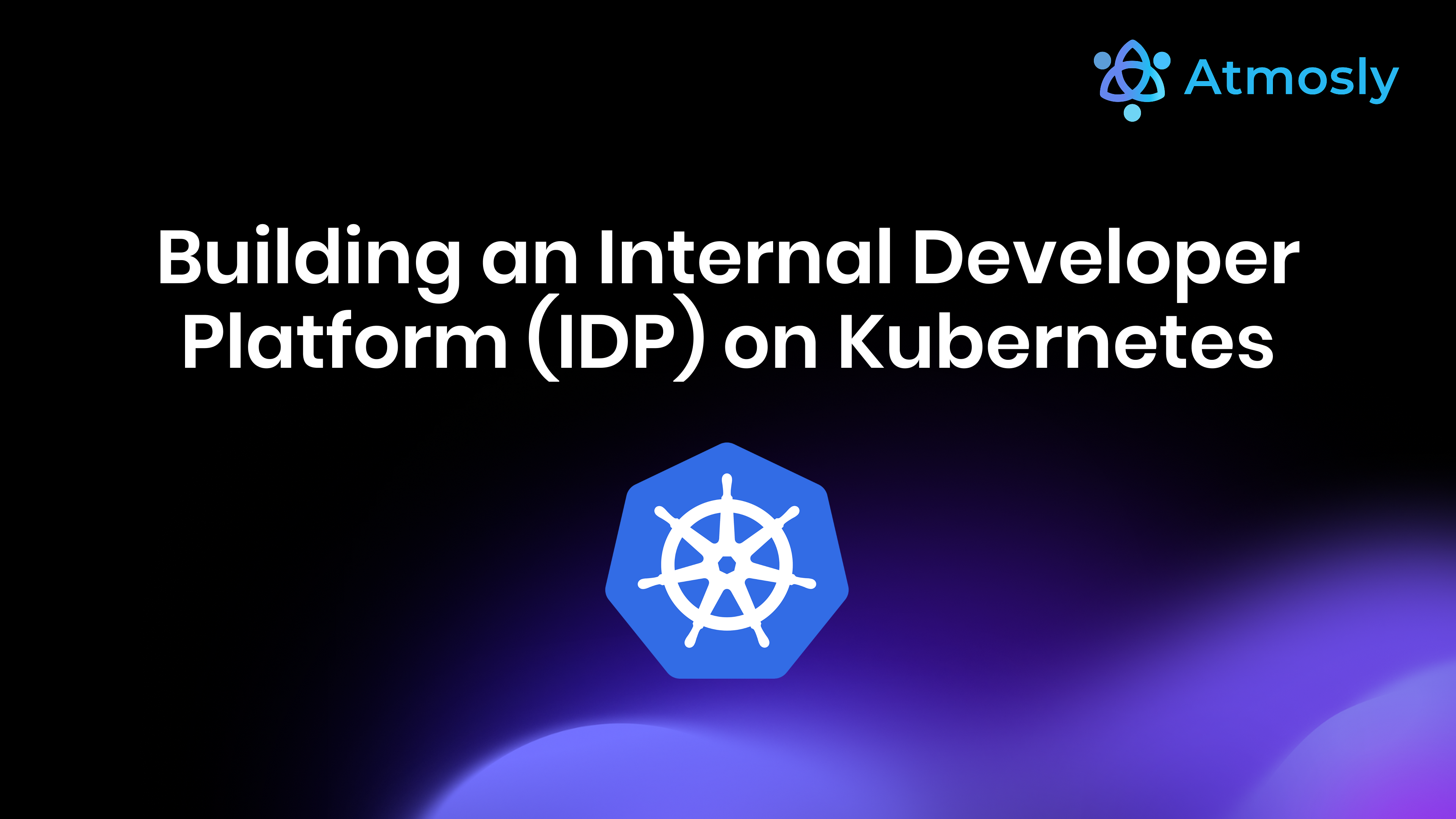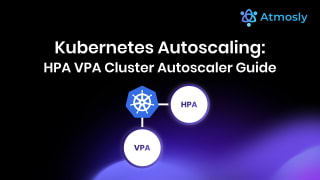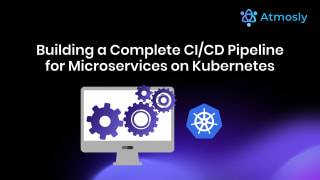Introduction to Internal Developer Platforms
An Internal Developer Platform (IDP) is a curated layer of tools, workflows, and automation built on top of Kubernetes infrastructure that provides developers with self-service capabilities for deploying applications, provisioning environments, accessing logs and metrics, and managing their services without requiring deep Kubernetes expertise or constant DevOps team intervention. The fundamental goal of an IDP is to abstract away infrastructure complexity while maintaining flexibility, enabling developers to focus on writing code and shipping features rather than wrestling with kubectl commands, YAML syntax errors, or cluster configuration details.
The rise of IDPs reflects a critical shift in how organizations approach platform operations: traditional models where developers submit tickets to operations teams for every deployment, environment creation, or configuration change create bottlenecks that slow development velocity, frustrate developers who wait hours or days for simple tasks, and overwhelm operations teams with repetitive manual work. IDPs invert this model by providing self-service infrastructure where developers can deploy applications to Kubernetes with a few clicks or simple commands, create preview environments for testing without operations team involvement, view logs and metrics for troubleshooting their own services, and manage configurations through familiar interfaces rather than learning Kubernetes internals.
However, building an effective IDP on Kubernetes requires careful design balancing self-service capabilities against security guardrails, developer experience against operational control, flexibility against standardization, and build-vs-buy decisions determining which components to build internally versus adopt from existing platforms. This comprehensive guide teaches you how to build a production-grade Internal Developer Platform on Kubernetes, covering: what IDPs are and why organizations invest in building them, the core components every IDP needs (self-service deployment, environment management, observability access, secrets management, RBAC), comparing build-your-own versus adopt existing platforms like Backstage or Humanitec, designing developer-friendly abstractions that hide Kubernetes complexity without losing power, implementing self-service deployment workflows with guard rails preventing dangerous configurations, providing environment provisioning for development, staging, and preview environments, integrating observability giving developers access to logs, metrics, and traces for their services, managing secrets securely while enabling developer self-service, implementing golden paths with templates and standard patterns, and how Atmosly serves as a ready-to-use IDP for Kubernetes providing self-service environment cloning where developers create staging or preview environments on-demand, visual pipeline builder for deploying applications without writing YAML, AI-powered troubleshooting enabling developers to debug their services independently using natural language queries, unified monitoring showing each team their services and metrics, RBAC-controlled access scoped to teams' namespaces and environments, and cost visibility showing teams their infrastructure spend—delivering IDP capabilities out-of-box without months of custom development.
By implementing IDP principles following this guide, you'll accelerate development velocity by eliminating operations bottlenecks, improve developer satisfaction by providing self-service rather than ticket-based workflows, scale your platform team by automating repetitive tasks, maintain security and compliance through guard rails and policy enforcement, and standardize on golden paths while preserving flexibility for legitimate exceptions.
Why Build an Internal Developer Platform?
The Problems IDPs Solve
Problem 1: Operations Team Bottlenecks
Traditional workflow:
- Developer needs staging environment for testing feature
- Opens Jira ticket: "Please create staging environment for feature-X"
- Waits 2-4 days for ops team availability
- Ops creates environment manually (1-2 hours)
- Developer tests, finds bug, needs environment updated
- Opens another ticket, waits again
IDP solution: Developer clicks "Clone Environment" button, gets staging environment in 10 minutes, self-service. Ops team time saved: 2 hours per request × 50 requests/month = 100 hours saved.
Problem 2: Kubernetes Complexity Barrier
Developers must learn:
- Kubernetes concepts (Pods, Deployments, Services, Ingress, PVCs)
- kubectl commands (apply, get, describe, logs, exec)
- YAML syntax (indentation errors, field names)
- Helm charts (values.yaml, templates)
- Networking (ClusterIP vs LoadBalancer, Ingress rules)
- Storage (PersistentVolumes, StorageClasses)
Learning curve: 2-4 weeks for basic proficiency, months for advanced.
IDP solution: Abstract complexity behind simple interfaces. Developer fills form (app name, Git repo, environment variables), IDP generates correct Kubernetes manifests, deploys application. Developer never writes YAML.
Problem 3: Configuration Inconsistency
Without IDP, each team creates their own Kubernetes configurations:
- Team A uses Deployments, Team B uses StatefulSets for stateless apps (inconsistent)
- Resource requests vary wildly (some 100m CPU, some 10 CPU for similar workloads)
- Security contexts missing or inconsistent (some run as root, some non-root)
- Monitoring and health checks not standardized
IDP solution: Standard templates (golden paths) for common patterns. All teams use same base configuration with customization only where needed. Consistency enables easier troubleshooting and cost optimization.
Core IDP Components
Component 1: Self-Service Deployment
Requirements:
- Simple interface (web UI, CLI, or API) for developers
- Deploy applications without kubectl knowledge
- Support common patterns (web apps, workers, cron jobs, databases)
- Automatic Kubernetes manifest generation from high-level inputs
- Deployment validation and guard rails
Example implementation with Backstage:
# Software template in Backstage
apiVersion: scaffolder.backstage.io/v1beta3
kind: Template
metadata:
name: deploy-web-app
spec:
parameters:
- title: Application Details
properties:
name:
type: string
description: Application name
gitRepo:
type: string
description: Git repository URL
port:
type: number
default: 8080
replicas:
type: number
default: 3
steps:
- id: generate-manifests
name: Generate Kubernetes Manifests
action: fetch:template
input:
url: ./kubernetes-template
values:
name: ${{ parameters.name }}
gitRepo: ${{ parameters.gitRepo }}
port: ${{ parameters.port }}
replicas: ${{ parameters.replicas }}
- id: deploy
name: Deploy to Kubernetes
action: kubectl:apply
input:
manifests: ${{ steps.generate-manifests.output.path }}
Developer fills form, Backstage generates and applies Kubernetes manifests automatically.
Component 2: Environment Management
Developers need:
- On-demand environment creation (development, staging, preview)
- Environment cloning (production → staging for testing)
- Environment lifecycle management (auto-cleanup after PR merged)
- Cost visibility per environment
Implementation approach:
- Namespace per environment with ResourceQuotas
- Kustomize overlays for environment-specific configuration
- GitOps with ArgoCD ApplicationSets for preview environments per PR
- CronJobs for auto-cleanup of stale environments (>30 days inactive)
Component 3: Observability Access
Developers need visibility into:
- Application logs (tail, search, filter by pod/container)
- Metrics (CPU, memory, request rate, error rate, latency)
- Distributed traces (request flow across microservices)
- Kubernetes events (deployments, crashes, scheduling issues)
Access control requirements:
- Developers see logs/metrics for their services only (not other teams')
- RBAC enforces boundaries (Team A cannot query Team B's metrics)
- Grafana/Kibana with folder permissions per team
Component 4: Secret Management
Developers need to configure secrets without seeing production values:
- Create secrets through UI providing key-value pairs
- Reference secrets in application configuration (DATABASE_URL from secret)
- Rotate secrets on schedule
- Never see production secrets (masked or not visible)
Implementation:
- Web UI creates Kubernetes Secrets or ExternalSecrets
- RBAC allows creating secrets in own namespace, not viewing
- Integration with Vault or cloud secret managers for enterprise
Component 5: Golden Paths and Templates
Pre-approved standard patterns for common use cases:
- Stateless Web App: Deployment + Service + Ingress with best practices (health checks, resource limits, Pod Security)
- Background Worker: Deployment with no Service, message queue connection
- Cron Job: CronJob with schedule, backoff limits
- Database: StatefulSet with PVC, backup configuration
Developers choose template, customize parameters, deploy. Ensures consistency and security.
Build vs Buy: IDP Implementation Options
Option 1: Build Custom IDP (Full Control)
Components to build:
- Developer portal (React/Vue frontend)
- Backend API (Python/Go) integrating with Kubernetes API
- YAML template generator
- GitOps integration (ArgoCD/Flux)
- Observability aggregation (Grafana/Kibana with RBAC)
- Cost allocation logic
Pros:
- ✅ Perfect fit for your exact requirements
- ✅ Full customization and control
- ✅ No vendor lock-in
Cons:
- ❌ 6-12 months development time
- ❌ Requires 3-5 platform engineers full-time
- ❌ Ongoing maintenance burden
- ❌ Cost: $500K-1M/year (engineer salaries + infrastructure)
Best for: Large enterprises (1,000+ engineers) with unique requirements, budget for platform team
Option 2: Adopt Backstage (Open-Source IDP)
Spotify's open-source IDP framework:
Pros:
- ✅ Free and open source
- ✅ Large plugin ecosystem
- ✅ Service catalog and documentation
- ✅ Software templates for scaffolding
Cons:
- ❌ Requires significant customization (2-4 months)
- ❌ Kubernetes plugin is separate (not included)
- ❌ Complex to operate and maintain
- ❌ More developer portal than deployment automation
Best for: Teams wanting service catalog, documentation, templates. Less focused on Kubernetes operations.
Option 3: Commercial IDPs (Humanitec, Port, Qovery)
Pros:
- ✅ Ready to use (weeks not months)
- ✅ Kubernetes deployment automation included
- ✅ Vendor support and SLAs
Cons:
- ❌ Expensive ($50-200 per developer per month)
- ❌ Vendor lock-in
- ❌ Less customization than custom build
Option 4: Atmosly as Kubernetes IDP (20% Content Starts)
Atmosly provides IDP capabilities specifically for Kubernetes without requiring platform team to build and maintain custom portal:
Self-Service Environment Management:
- Developers create environments on-demand (development, staging, preview) through web interface without kubectl knowledge
- One-click environment cloning from existing environments (clone production to create realistic staging)
- Environment lifecycle management with auto-cleanup for ephemeral environments
- Each team/project manages their own environments (RBAC-enforced boundaries)
Visual Pipeline Builder:
- Create CI/CD pipelines through drag-and-drop interface generating GitHub Actions or GitLab CI configurations
- Deploy applications without writing Kubernetes YAML manifests
- Automatic health check configuration and deployment validation
- Integration with GitOps (generates ArgoCD Applications or Flux Kustomizations)
Unified Monitoring and Troubleshooting:
- Developers access logs, metrics, events for their services through unified dashboard
- AI Copilot enables troubleshooting with natural language questions ("Why is my pod crashing?") without kubectl expertise
- Automatic Root Cause Analysis when issues detected providing specific fixes
- RBAC ensures developers see only their team's services (cannot access other teams)
Cost Transparency:
- Per-project cost dashboard showing team's infrastructure spend
- Resource optimization recommendations (over-provisioned pods, idle resources)
- Budget alerts when approaching limits
- Showback for internal billing
Team-Based Multi-Tenancy:
- Organizations contain multiple projects (teams)
- Projects map to Kubernetes namespaces providing isolation
- Automatic RBAC configuration preventing cross-team access
- Each team manages their services, environments, and deployments independently
Atmosly vs Building Custom IDP:
| Aspect | Build Custom IDP | Atmosly Platform |
|---|---|---|
| Time to Deploy | 6-12 months development | Days (setup and onboarding) |
| Team Required | 3-5 platform engineers full-time | Zero (managed platform) |
| Annual Cost | $500K-1M (salaries + infra) | Subscription-based pricing |
| Maintenance | Ongoing (bugs, features, upgrades) | Zero (vendor maintains) |
| Customization | Unlimited | Configurable within platform |
| AI Capabilities | Must build separately | Built-in (AI Copilot) |
Designing Developer-Friendly Abstractions
Abstraction Level: Hide Complexity, Preserve Power
Bad abstraction (too simple):
- "Deploy my app" with zero configuration options
- Works for hello world, breaks for real applications
- Developers hit limitations immediately
Bad abstraction (too complex):
- Exposes every Kubernetes field in UI
- No better than writing YAML directly
- Defeats purpose of abstraction
Good abstraction (progressive disclosure):
- Simple mode: App name, Git repo, port, environment variables (covers 80% of use cases)
- Advanced mode: Resource limits, health check configuration, volume mounts
- Expert mode: Full YAML editing for edge cases
The App Specification Abstraction
Instead of Kubernetes Deployment YAML, developers provide high-level spec:
name: user-service
gitRepo: https://github.com/myorg/user-service
buildpack: node # or python, go, java
port: 8080
environmentVariables:
- name: DATABASE_URL
valueFrom: secret/db-credentials/url
- name: LOG_LEVEL
value: info
resources:
preset: medium # small, medium, large (maps to CPU/memory)
autoscaling:
enabled: true
minReplicas: 2
maxReplicas: 10
targetCPU: 70
IDP translates this to Kubernetes Deployment + Service + HPA + ConfigMap/Secret references. Developer never sees YAML.
Implementing Golden Paths
What Are Golden Paths?
Golden paths are pre-approved, well-tested, opinionated templates for common use cases that encode best practices, security policies, and organizational standards.
Example Golden Path: Stateless Web Application
Template includes:
- Deployment with 3 replicas minimum (availability)
- Resource requests: 250m CPU, 512Mi RAM (right-sized)
- Resource limits: 1 CPU, 1Gi RAM (prevent noisy neighbor)
- Security context: runAsNonRoot: true, readOnlyRootFilesystem: true
- Liveness probe: HTTP /healthz on port 8080
- Readiness probe: HTTP /ready on port 8080
- HorizontalPodAutoscaler: Min 3, max 20, CPU target 70%
- Pod Security Standard: restricted level enforced
- ServiceMonitor for Prometheus metrics collection
- Network Policy: Allow ingress from ingress-nginx namespace only
Developer only provides: app name, Git repo, environment variables. Golden path fills in all best practices automatically.
Allowing Exceptions
Golden paths should be opinionated but not rigid:
- 80% of applications fit golden path (use as-is)
- 15% need minor customization (different resource sizes, additional volumes)
- 5% are snowflakes (require full custom configuration)
IDP should support all three: easy golden path default, customization options, and "escape hatch" for full YAML editing when needed.
RBAC and Access Control for IDPs
Tiered Access Model
Tier 1: Developer (Self-Service with Guard Rails)
- Can: Deploy applications to their team's namespaces, view logs and metrics, scale replicas within limits
- Cannot: Modify RBAC, access other teams' namespaces, change resource quotas, deploy to production (requires approval)
Tier 2: Team Lead (Broader Permissions)
- Can: Everything developers can + approve production deployments, modify team's resource quotas, manage team members' access
- Cannot: Access other teams, modify cluster-level configuration
Tier 3: Platform Admin (Cluster-Wide)
- Can: Manage cluster infrastructure, create namespaces, set quotas, configure shared services (monitoring, ingress)
- Limited to: 2-5 people (minimize blast radius)
Cost Management in IDPs
Implementing Showback/Chargeback
Showback (Visibility Only):
- Show teams their resource consumption and costs
- No actual billing, just awareness
- Encourages cost-conscious behavior
Chargeback (Actual Billing):
- Bill teams for their infrastructure usage
- Allocate costs from centralized cloud bill to teams
- Incentivizes optimization (team budgets affected)
Implementation with Kubecost or Atmosly:
- Track namespace-level resource usage from Prometheus
- Integrate with cloud billing APIs (AWS Cost Explorer, GCP Billing)
- Calculate cost per namespace using cloud pricing
- Generate monthly reports per team
Conclusion: Building Effective IDPs on Kubernetes
Internal Developer Platforms dramatically improve developer productivity by abstracting Kubernetes complexity, providing self-service capabilities, standardizing on golden paths, and maintaining security through guard rails and RBAC. Whether building custom, adopting Backstage, or using platforms like Atmosly, the goal is empowering developers while maintaining operational control.
IDP Success Factors:
- ✅ Self-service deployment without kubectl expertise
- ✅ Environment management (create, clone, delete on-demand)
- ✅ Observability access scoped to team's services
- ✅ Secret management with appropriate access controls
- ✅ Golden paths encoding best practices
- ✅ RBAC enforcing team boundaries
- ✅ Cost visibility and allocation per team
- ✅ Guard rails preventing dangerous configurations
Ready to provide developers self-service Kubernetes without complexity? Explore Atmosly as your Kubernetes IDP with built-in environment cloning, pipeline builder, AI troubleshooting, and cost intelligence—delivering platform engineering capabilities without building custom tooling.






